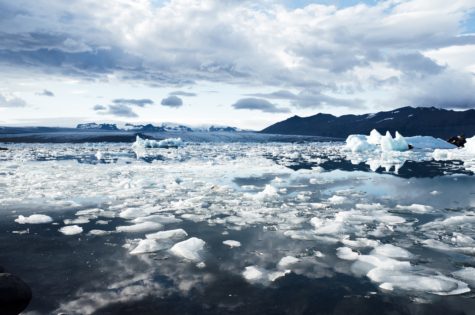OSLO, Norway —As summer arrives, months of rising temperatures can serve as a grim reminder that global warming is a very real problem. Now, a new study has discovered even more evidence of climate change’s impact. Researchers in Norway say the world’s glaciers are melting faster than ever before.
Their data reveals glaciers have lost almost 270 billion tons of ice each year over the last two decades. That’s equivalent to submerging the surface of Great Britain under six and a half feet of water annually. The deluge accounts for more than a fifth of the rise in sea levels, which has doubled since the turn of the century.
“For the first time, we have a series of data that extends over 20 years and that covers all the world’s glaciers,” says study co-author Professor Andreas Kääb from the University of Oslo in a release.
An international team analyzed images from the NASA satellite Terra, launched in 1999. The satellite works in much the same way as the human brain calculates distance from the angles our eyes see an object.
“Now we get results from these data that those who built the satellite had never thought of,” Kääb explains. “The satellite takes two different pictures from two different angles, and from these images computers can calculate the distance from the ground to the satellite. If we do this over time, we will also see if what is down there on the ground becomes smaller or if it grows.”
Explaining how some areas actually have growing glaciers – for now
The study, appearing in the journal Nature, is based on a global inventory of 220,000 glaciers, ranging from ones smaller than a football field to some larger than a country. Researchers say nearly all are thinning and retreating due to man-made global warming through stronger melting in warmer air or due to shifting snowfall.
“The melting has accelerated. We have become accustomed to reading about this, but it really has accelerated. There are only two areas where the glaciers have grown a little,” Kääb reports.
From 2000 to 2019, the glaciers have lost 267 billion tons of ice per year. Alaska, Iceland, and the Alps have been worst hit. Paradoxically, there are areas where glaciers actually grew during this period. However, Kääb says climate deniers have been wrong to rely on that phenomenon.
“When the climate gets warmer, the atmosphere can hold more water. In some places there will therefore be more precipitation,” the study author says.
When that precipitation comes down as snow, glaciers become larger. Unfortunately, scientists believe this effect is about to subside and disappear. In the Karakoram mountain range in the border area between Pakistan, China, and India, for example, glaciers have grown.
“Our results show that the period of growing glaciers in Karakoram is over. The reason is not necessarily that there was less precipitation, it’s because it’s getting even warmer,” Kääb notes. “It will be too hot for more precipitation to compensate for the melting ice. It seems like the Karakorum anomaly is over, simply because it has become too hot.”
Even the coldest places on Earth won’t have ice forever
The east coast of Greenland has also enjoyed a period of growing glaciers. Fast flowing air currents called jet streams may have transported more precipitation to this region, the scientists find. However, even in the Arctic Circle, this effect will not last.
“Sea level rise from melting in Greenland and Antarctica is getting closer and closer, but today much of the sea level rise comes from all the other glaciers. They are now declining more than Greenland and Antarctica,” the Norwegian researchers explains.
In the last 20 years, the rest of the world’s glaciers have lost as much volume as the two huge ice caps combined. In addition, the more than 200,000 glaciers can affect humans in other and equally dramatic ways.
“These glaciers are located in places where people live. People in the Himalayas or in the mountains of South America do not care so much about sea level rise. They care about the supply of water during dry periods,” Kääb concludes. “If it gets warmer and the glaciers melt, there will first be a lot more water. There may be even too much water and they may experience flood. As the glaciers get smaller and smaller, the trend reverses. Then they suddenly get less and less water. This causes problems both for agriculture, for water supply and for hydropower.”
SWNS writer Mark Waghorn contributed to this report.
